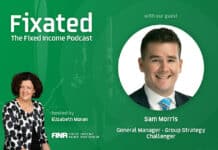
ASX-listed bank hybrids are being phased out and will disappear completely by 2032. Interestingly, the number of over-the-counter corporate hybrids is growing, and these securities, if you can get your hands on them, have many similar qualities to bank-listed hybrids.
Why do companies issue hybrid securities?
Corporate hybrids have unique qualities. They are neither defined completely as debt or equity but have characteristics of both. They are equity-like, in that they are perpetual and never have to be repaid, and they are debt-like in that they provide regular income payments. Income payments also have franking credits attached, pushing current returns into the high 6 to 7.5% per annum range.
The advantages for the issuer include:
- Credit rating agencies consider hybrids to be more equity-like like so, provide equity credit for issues, so debt does not increase. More debt may put credit ratings under downward pressure, sometimes challenging the lowest investment grade credit ratings, potentially pushing them into sub-investment grade territory, where the cost to issue is typically substantially higher. Additionally, it could force some investors to sell as they may be unable to hold sub IG securities.
- Equity is not diluted, nor are metrics such as earnings per share, which may otherwise put downward pressure on the share price.
While the securities never have to be repaid, there are good reasons for the company to make sure they are called at the first call opportunity:
- Once hybrids reach the call date, the interest margin (over the benchmark) steps up, making the debt more expensive. This can be a significant step up. The recent Lendlease deal had a 500 basis point step-up.
- There’s a dividend stopper in place. If the company fails to repay at first call, subject to certain conditions, the company is prohibited from making distributions on its shares. Halting dividends would likely see the share price tumble.
Also read: Positive Outlook for State Govt Bonds
Sample issues include:
- Ampol raised $500m in October 2025, with bids of $3.6 billion at 200 basis points over swap. The deal was 50 basis points tighter than Ampol’s 2024 transaction despite an having an additional three years until call
- Lendlease Finance raised $450m in October 2025 with a perpetual three-year deal. The issue has no final maturity, coupons are deferrable, there is a dividend stopper after three years, and, positively, it carries franking credits
- Melbourne Airport raised $1 billion in June 2025, also in a dual tranche deal:
- A September 2030 call, which priced at 205 basis points over 3-month BBSW
- A September 2032 cal,l which priced at 220 basis points over semi quarterly swap
- Transgrid raised $1.4 billion in March 2025 in a dual tranche deal:
- A March 2030 call, which priced at 205 basis points over 3-month BBSW
- A March 2033 call, which priced at 225 basis points over semi quarterly swap
Importantly, there was more than $7 billion in bids, and margins tightened by circa 25 basis points from indicative pricing.
Note: To purchase corporate hybrids in the over-the-counter bond market, you need to find a bond dealer/broker. See a list of small parcel bond dealers on the Bond Portfolio tab on the website.





























